
Small Business Community Finance Scaling with Integrity

SMALL BUSINESS COMMUNITY FINANCE: SCALING WITH INTEGRITY | 01 Small Business Credit in America .................................................. Rising to the Challenge: The Development of the Small Business Community Finance Field .............................................. Necessity, the Mother of Invention: COVID-19 ........................... Our Impact ............................................................................................. What is Next? The Market of the Future .................................................................. Appendix ................................................................................................ Executive Summary ............................................................................ Table of Contents 02 04 12 24 08 20 26 30 MARKET CONDITIONS: THE CONTEXT MARKET INNOVATION: THE RECOVERY FUNDS MARKET POTENTIAL: THE FUTURE
This is an exciting place to be right now. There’s innovation happening. We see off balance sheet lending. We see third party originations. We see securitizations, and loan sales. All of these things were previously thought not possible, or that that these things would happen in 10 or 20 years.”
Sayblee of Sayblee Products in Miami, Florida received a SOAR Fund loan from Ascendus. During the pandemic, Sayblee was at a loss when her main source of sales, the farmers market, closed. She knew she had to transition to online sales and
turned to Ascendus for help in securing a loan for creating a competitive online presence. Because of her loan, she was able to successfully cultivate a new client base and keep her business running.
Kristen Scheyder, Senior Program Officer, Citi Foundation
Executive Summary Gratitude
This work would not have been possible without many individuals and institutions. A special thanks to our co-authors and partners, the Community Reinvestment Fund and the National Development Council. We are grateful to the incredible Community Development Financial Institution (CDFI) small business lenders with whom we have been privileged to work. Our CDFI partners have been as innovative as they are committed to serving small businesses.
We are thankful to all the investors, funders, and state agencies who provided support to small business owners during the pandemic, especially those who invested in our small business Recovery Funds. A special thanks to Wells Fargo and the Citi Foundation for their support of our small business thought leadership.
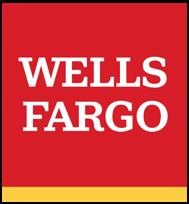
Finally, we express our gratitude to the thousands of small business owners who make our lives easier and better every day. Your grit, creativity, and courage are a constant source of inspiration to us all.
About the Authors
Supported By
Small businesses in America are chronically undercapitalized. The community finance organizations that serve these small businesses are likewise capital constrained, in part due to their prioritization of mission in service of their communities and in part due to structural industry challenges like limited access to secondary markets.
In this report, we share learnings from a market innovation prompted by the COVID-19 pandemic, documenting the development of a quasi-secondary market for small business loans through multiple statebased loan participation funds known collectively as the “Recovery Funds”. The Recovery Funds have financed more than 5,500 small businesses, nearly 70% of them led by women or people of color, through nearly 40 community lenders across the country. Participating in the Recovery Funds allowed community lenders to exponentially increase their originations without needing to increase the size of their balance sheets at the same rate.
of a broad range of community lenders. While not all CDFI operations can be centralized, these efforts ultimately create operating efficiencies while allowing community lenders to stay deeply localized in their communities.
3. Support data collection and analysis: Provide or allow funding for organizations to collect, standardize, and share transaction-level, lender-level, and marketlevel data to encourage a broader and deeper understanding of the CDFI lending market.
Calvert Impact is a global nonprofit investment firm that helps all types of investors and financial professionals invest in solutions that people and our planet need.
Relying on innovative technology, CRF is a National CDFI that collaborates with a national network of community partners to provide capital to small businesses across the country.
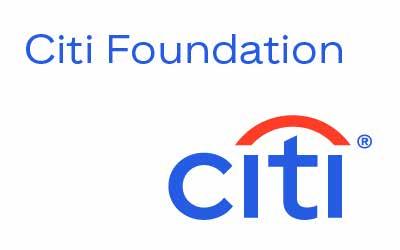
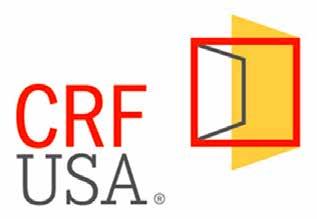
Guiding a collaborative effort, Krystal Langholz wrote and led the creation of this report. Published by Calvert Impact, June 2023.
NDC acts as partner, teacher, advisor, investor, developer and lender, bringing together technical know-how and capital for community and economic investment.
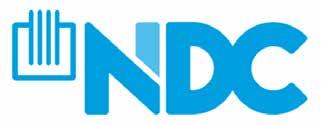
These efforts provide a roadmap for how to scale with integrity and remain true to the mission of the CDFI field. We call for policy makers, banks, and investors to provide support around five key areas to foster innovation and further market development in community finance:
1. Address the gap between real and perceived risk with smart subsidy : Philanthropic and public funding sources can help bridge this gap by providing credit enhancement for secondary market pools, including loan guarantees and subordinate capital to leverage private investment and bring down the cost of capital.
2. Invest in market infrastructure: Support centralized or regional functions–including shared services, marketplace platforms, customer acquisition strategies, etc.–that increase the capacity or efficiency
4. Prioritize home-grown technology : The community finance industry - like the financial system overallneeds investments in technology across the customer lifecycle (marketplace and customer aquisition, application and decisioning, loan servicing, customer support, etc.) but many financial technology companies are not tailored to the needs of CDFIs or offer solutions at price points that are prohibitive for most lenders. Supporting the development and adoption of these technologies will help CDFIs continue to attract customers and compete.
5. Leave no community behind: Some CDFI markets will need a higher level of subsidy than others due to the long-standing history of asset-stripping in under resourced communities. Equity must remain a lens by which we approach the development of the CDFI field at every step and with any new innovation.
It will take all of us to create more equitable capital access for small business owners. It is our hope that by telling the story of the Recovery Funds, we can share what is possible when we give our collective focus to creating comprehensive solutions to broken capital markets.
02 | SMALL BUSINESS COMMUNITY FINANCE: SCALING WITH INTEGRITY SMALL BUSINESS COMMUNITY FINANCE: SCALING WITH INTEGRITY | 03
Small Business Credit in America

Small businesses are critical to our economy. They provide roughly half of the private sector employment and are responsible for 65.1% of the net new job creation in the US since 2000. Despite the prominence of these small businesses, it is difficult to obtain a small business loan in America. In fact, 2021 was the tightest credit environment for small businesses in the last five years, with only 31% of loan applicants receiving all the financing for which they applied. Even before the pandemic, the market gap for small business loans was an estimated $87 billion. 2 Similar to buying a house without a mortgage, without access to credit, small businesses struggle to invest in their growth (new inventory, equipment, customer outreach), limiting their potential to build income and wealth for themselves and their employees.
This credit market is especially tough for small business owners of color who have long lacked access to capital. Although people of color represent nearly 40% of the US population, they own less than 20% of the businesses in the United States. 3,4 This is a significant contributor to the racial wealth gap. Business ownership is second only to home ownership as a driver of intergenerational wealth creation.
46%
65% of US employees work at small businesses5
of the new jobs in America since 2000 came from small businesses6
GG Bakes – a family run bakery — needed help while their storefront was closed during the pandemic. They used a loan from Ascendus to purchase signage, tables, and tents so they could set up at outdoor farmers markets and continue selling treats to their customers.
Business ownership is second only to home ownership as a driver of intergenerational wealth creation.

04 | SMALL BUSINESS COMMUNITY FINANCE: SCALING WITH INTEGRITY
of the US population are minorities Small businesses that received all financing sought in 2017 Small businesses that received all financing sought in 2021 Source: The Fed Availability of Credit To Small Business of the small business owners population are minorities 40% 20%
are underrepresented in small business
Businesses Receiving All of Their Request 2017 U.S. population
to financing for small business is declining
Minorities
Credit-Seeking
2021 Small business owners 47% 31% Access
White 57.6% American
57.0% Hispanic 41.6% Black or African American 35.7% Asian 35.1% MARKET CONDITIONS: THE CONTEXT | 05
Indian & Alaska Native
Size Matters
Small business lending is no longer considered lucrative enough to be worth the effort for most banks. The banking industry has undergone massive consolidation with the number of banks decreasing by two-thirds since 1980.7 Coupled with closures of many physical bank branches in rural and low-income communities, there has been a large decline in access to the community banks that once were the lifeblood of the small business finance sector. Regulation has also increased, ultimately meaning that the cost of evaluating and performing ongoing business monitoring for smaller dollar loans makes them less attractive.8 As small businesses owned by people of color are generally smaller in size, earn less revenue and have fewer employees, this only further exacerbates capital inequities for small business owners of color.9
There is a high demand for small dollar loans with 60% of small businesses holding less than $100,000 in debt. This mismatch in supply and demand has dire consequences for small business owners, leaving them without the working capital to expand or without a financial cushion to survive in the face of economic hardship.
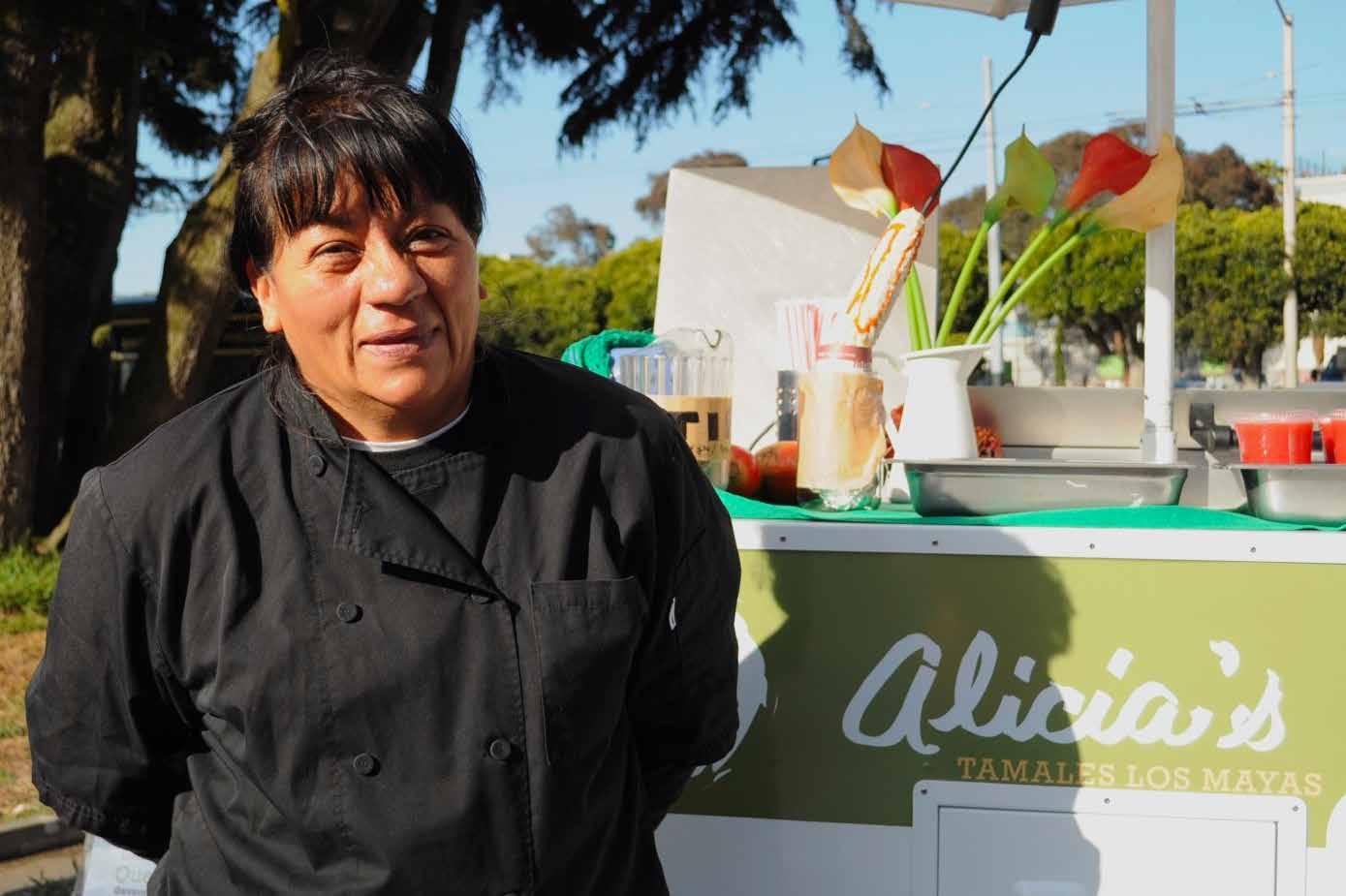
Participating CDFI originator
have less than $1 million in revenue.
Predators Pounce
26% 4% received the financing they sought 52%
have more than $1 million in revenue. Of those, have more than $10 million in revenue, the underwriting target set by most banks.
Online, merchant cash advance (MCA) and payday lenders, often categorized as fintech lenders, have stepped into the gap. Nearly a quarter of small businesses received financing from an online lender last year, a disproportionate number of them being very small businesses (defined as those with 10 or fewer employees) and businesses owned by people of color, whom these lenders intentionally target. While some fintech lenders play a critical and positive role in the financial ecosystem, predatory
lenders—motivated by profit, and seeking high returns—sought to exploit desperate small business owners during the pandemic. Small business owners reported that receiving a loan from these fintech lenders is generally an unpleasant experience due to their unfavorable repayment terms and high interest rates.10 Last year, these on-line lenders earned abysmal satisfaction ratings (only 34%), by far the lowest of any other category of lender.11
06 | SMALL BUSINESS COMMUNITY FINANCE: SCALING WITH INTEGRITY SMALL BUSINESS COMMUNITY FINANCE: SCALING WITH INTEGRITY | 07
Small Businesses with Employees
Small business credit needs are too small to be met by most banks
Of those,
received the financing they sought 24%
74%
Small dollar loans can make a big difference
Alicia Villanueva, owner of Alicia's Tamales Los Mayas, used her loan from Pacific Community Ventures for working capital and invested a portion back into the business to reach new clients.
MARKET CONDITIONS: THE CONTEXT Revenue Size of Firm 7% 30% 63% 47% 14% 39% 30% 17% 53% 19% 29% 53% White Asian Hispanic Black > $1M $100K - $1M <$100K
Shared problems are best solved through shared solutions.
Rising to the Challenge: The Development of the Small Business Community Finance Field
There is a long history of community finance organizations focusing on reaching underserved markets, such as the Black-owned banks that had their genesis in the 1880s. The Riegle Community Development and Regulatory Improvement Act of 1994 created the Community Development Financial Institution (CDFI) Fund, a federal agency under the U.S. Treasury that invests federal dollars in mission-driven financial organizations. This policy – paired with bank regulation under the Community Reinvestment Act of 1977 – seeded the creation of the modern community finance sector. CDFIs leverage federal dollars with private capital to lend in our nation’s most distressed communities. There are 1401 CDFIs currently certified by the U.S. Treasury, including banks, credit unions, loan funds, and venture capital funds.12 A subsection of just over 800 certified CDFIs collectively reported possessing nearly $152 billion in total assets in 2020. Known for providing wrap-around training and technical assistance to help their clients succeed, these same CDFIs reported providing 4.6 million clients these support services.
Relative to their size, CDFIs have a disproportionate impact on the small business lending sector, with CDFIs reporting $11.7 billion in small business and microloan assets in 2020.13 With 84% of CDFI portfolios currently deployed in low-income areas, to low-income people or people of color, CDFIs are reaching entrepreneurs that need support the most.14 This is demonstrated by
the fact that African American-owned small businesses are three times more likely to apply to a CDFI than white-owned small business.15 Relying on flexibility, relationships, and trust built in their communities, CDFIs are incredibly effective small business lenders.
The Catch 22
While there has been continuous growth and innovation in the CDFI field over the last 40 years, CDFIs still struggle with the same challenges they have faced from inception: sustainability and scale.
CDFIs are limited by the size and restrictions of their balance sheets – in other words, the money they can raise and lend on their own books. Because of the perceived risk of their work, they are often required to hold much greater capital than their traditional counterparts, reducing their ability to leverage their equity. Put more simply – when a traditional bank gets $1 of equity, they can often leverage that $1 to do $15$20 in lending. When a CDFI gets $1 of equity, they can only leverage that $1 to do $4-$5 in lending.
Not only does the equity not stretch as far, but it is also difficult to raise. For many CDFIs structured as nonprofit 501(c)(3)s, their only source of equity is either retained earnings or grants from the Treasury Department or
philanthropy. Grants are difficult to raise, especially in moments where so many parts of our society are in need. For-profit CDFIs and CDFI banks require largely private, illiquid equity investments from patient, longterm investors, which limits their investor base and, thus, their scale. Access to the capital needed to meet their growing lending demands has been a chronic constraint within the CDFI industry since its birth; in a recent survey of CDFI loan funds, over 75% expressed an “urgent” or “somewhat urgent” need for capital over the next 6 - 12 months.16
On the income statement side of their business, these lenders – like banks – live off of the spread between their cost of capital and the returns on their loans or
84% of CDFI portfolios are deployed in low-income areas,

08 | SMALL BUSINESS COMMUNITY FINANCE: SCALING WITH INTEGRITY SMALL BUSINESS COMMUNITY FINANCE: SCALING WITH INTEGRITY | 09
MARKET CONDITIONS: THE CONTEXT
CDFIs are lending organizations that are largely deeply localized and tied to place.
A small business borrower of the Nimiipuu Fund, Stacia Morfin of Nez Perce Tourism, gives a tour. The Nimiipuu Fund is a Native CDFI serving the Nez Perce Reservation, providing culturally tailored lending products and programs for their community. Photo credit: Jennfer Rapoza photography.
In many ways, the CDFI field is a field still characterized by a number of small, placebased institutions with limited resources. The CDFI field cannot be expected to scale up solely through the growth of individual CDFIs.”
Michael Swack, Director, Center for Impact Finance, Carsey School of Public Policy
to low-income people or people of color
Securitization 101
Securitization is a process where financial assets are pooled together to create standardized financial products, such as asset backed securities, for trade in the market. Requirements for accessing the asset backed securities market include standardization, receiving ratings from credit rating agencies, and the development of distribution channels. This type of specialized market development is financially costly and thus requires significant volume to become practical. However, creating rated investments not only builds a much-needed secondary market to generate liquidity (the ability to buy and sell securities on an open market), but it also standardizes risk across the credit markets.
1. Originate Loan
Lender(s) make loans meeting a set of standardized eligibility and underwriting criteria to borrowers.
2. Pool Assets
The assets, in this case loans, are sold to a "Special Purpose Vehicle" (SPV) that only includes the eligible loans.
3. Issue Securities
The SPV issues debt backed by the cash flows from the assets in the pool. Often there are multiple tranches of debt based on the desired risk/return profile of various investors.
4. Sell Securities
The securities are sold to investors at the initial offering and then traded over time, as needed, in the secondary market.
investments – so if they borrow at 3% and lend at 7%, the 4% spread is what they earn to cover all of their operating costs – people, technology, rent, marketing, and loan loss expense. This business model only works at scale – particularly when affordability is a critical part of their mission. A 4% spread on a $10 million loan fund is only $400,000. That is not enough to cover the fixed costs of lending.
Additionally, CDFIs typically make much smaller loans because they are serving much smaller businesses. Banks often talk about how they have increased their minimum loan size because they have to do the same work to make a $10 million loan as they do to make a $100,000 loan – but they make a lot more money from the $10 million loan. This is another issue with operating at a small scale.
These challenges are inherent to the CDFI model. In providing high-touch technical assistance in their communities, CDFIs have higher operating costs than other lenders. CDFIs are lending organizations that are largely deeply localized and tied to place, leaving many CDFIs unable to generate sufficient and consistent volume to connect to the broader capital markets. For those who love the CDFI model, it is clear that its strengths are its weaknesses.
Standardization, a foundational component of scaling any credit market, has remained elusive across the CDFI industry. Community lenders rightly believe that their products are and should be non-standard because they are creating them in response to the specific credit needs in their communities. There are many small CDFI lenders whose unique operating models and products - adaptation to local language, culture, geography and politics - are the foundation of their success (e.g., a Native CDFI that serves a specific reservation community). They are also often character-based lenders, which is a hard
criterion to standardize. While CDFI coalitions and cohorts have mitigated these challenges somewhat by creating opportunities for the sharing of best practices, increased voice in advocacy, and shared fundraising, it has been unclear how to confront the challenge of standardization.
Secondary Market Development
Scaling community finance requires the development of active and liquid secondary markets. A secondary market is a market where assets and previously issued securities can be bought and sold. Every other segment of the credit markets – mortgages, auto loans, credit card receivables, commercial loans, even loans for private jets – has relied on secondary markets to reach scale, but there has been very limited secondary market activity within the community finance sector outside of the single and multi-family mortgage markets and SBA-guaranteed loans.
Secondary markets support scale by taking assets off the balance sheet of the originating lender so their originations volume is not reliant on their limited capital base (whether it be net assets of a nonprofit loan fund or tier one capital of a bank).
Scaling finance through secondary markets
Lenders make loans to consumers that meet standardized criteria.

The SPV pools assets and creates diversified products that they sell to investors.
The lender has a limited amount of money it can lend. When it sells debt to an SPV, it frees space on its balance sheet so it can lend more.
SMALL BUSINESS COMMUNITY FINANCE: SCALING WITH INTEGRITY | 11 LENDER SMALL BUSINESS SPECIAL PURPOSE VEHICLE INVESTOR $ $ $ $ $ $ $ $ $ $
$
$
$ $
MARKET CONDITIONS: THE CONTEXT
This is an industry that changes lives”
Ann Finnegan, NDC Community Impact Loan Fund President
Necessity, the Mother of Invention: COVID-19
Emergencies exacerbate existing inequities, and the small business credit market during the COVID-19 pandemic was no exception. When COVID hit our economy in March and tens of millions of small businesses across the country were affected, the United States got a rare, system-wide glimpse of the challenges with our banking system. If you picture our banking system as an electric grid – set up to connect flows from the sources of money to the bank accounts of individual businesses – the United States learned quickly that a massive share of our economy was in the dark.
Of the 31 million small businesses across the country, only about 5% of them received a Paycheck Protection Program (PPP) loan in the first round of the program because most of the banking system initially provided loans only to their own customers. Millions of business owners realized that the government’s only distribution system for direct aid was the same system that had
locked them out for years because they were too small, located in the wrong zip code, or owned by the wrong person.
These inequities had disastrous consequences for small business owners of color. Businesses owned by people of color were more negatively affected by the pandemic, but they were significantly more likely to be declined for loans. Business owners of color were deeply aware of this inequity; all business owners of color were less likely to apply for pandemic-related assistance because they were confident they would not qualify. This was especially true for Black-owned firms, with 67% of Blackowned firms not seeking pandemic-related financial assistance because they believed they would not qualify compared to 43% of white-owned firms. Black-owned small businesses were twice as likely to have to close during the pandemic due to these inequities.17
Born out of the federal response to the pandemic, the PPP program was not originally set up for active participation from community finance organizations. While there are many additional reasons that the program failed to adequately serve small businesses owned by people of color, the exclusion of CDFI lenders—the lender-of-choice for many small businesses owned by people of color—ultimately led to the marginalization of small business owners of color. However, once enormous income disparities in PPP access came to light, the U.S. Small Business Administration and the Federal Reserve changed their policies to accommodate more non-bank lenders. Following those policy revisions, certified CDFIs quickly led the charge, doing more than $34 billion of PPP loans throughout the program with much higher deployment rates in low-income communities than the general program averages.18
Activating Relationships
CDFIs faced the challenge of a lifetime with COVID-19. Many lenders put their entire portfolios on deferral, pausing all payments. This provided critical support for their borrowers, but it also stopped the recirculation of their loan capital at the exact moment they most needed that capital to be repaid for new lending. And without interest—most knew that they would face major operating shortfalls within just months.
Mostly, entrepreneurs have put their entire life savings, their efforts, into their businesses to nurture it, help it grow and to see it flourish. To have it threatened with foreclosure, you're not only talking about potentially wiping out a small business, as many were forced to close, but you're also talking about the impact it will have on that family and their community. We are well aware of the racial wealth gap that exists and to have something like this standing in front of them with the reality that they can lose it all was a really frightening prospect, especially for entrepreneurs of color.”
James Bason, President & CEO, TruFund Financial Services, Inc.

Recovery Funds meant businesses were able to grow, instead of close
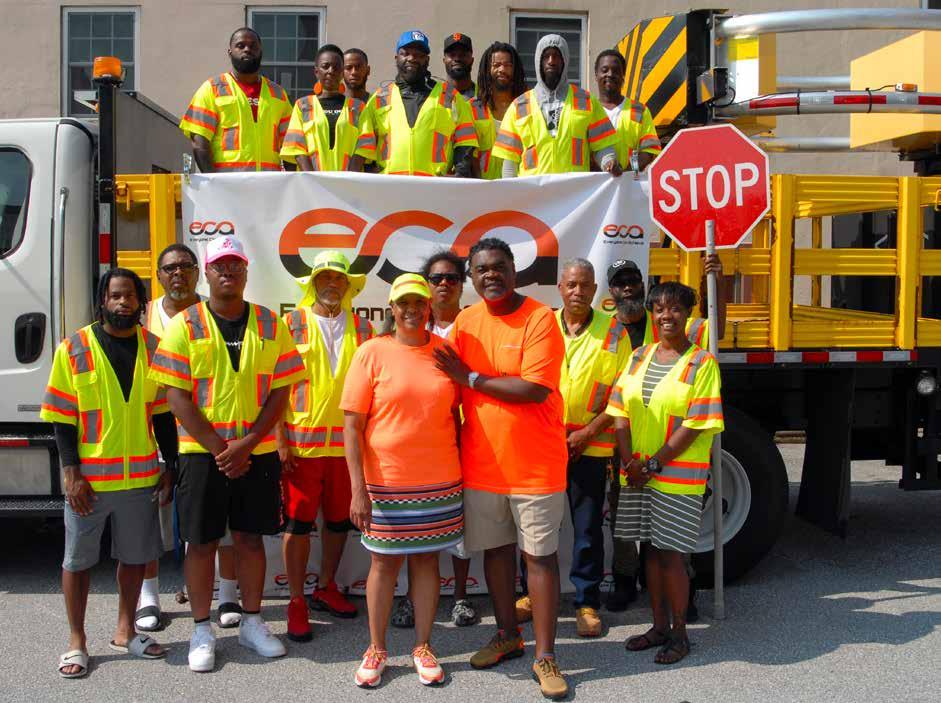
The state of New York pulled together a group of CDFIs to collectively confront these challenges and to respond to the small business crisis in the state, given it was the epicenter of the pandemic at the beginning. In March 2020, eight organizations—Calvert Impact, Community Preservation Corporation (CPC), Community Reinvestment Fund, USA (CRF), LISC, National Development Council (NDC), Pursuit Lending (Pursuit), TruFund Financial Services (TruFund) and Ascendus—met for the first time, virtually, to begin refining a new small business lending model.
This model was adapted from an earlier COVID response initiative, known as the Chicago Small Business Resilience Fund, which involved participation from the City of Chicago, Goldman Sachs, MacArthur
Foundation, and several local CDFIs including Allies for Community Business and Chicago Community Loan Fund. The effort in New York benefitted from some of the early learnings in Chicago about how best to structure a capital source for quick response and deployment. As countless entrepreneurs completely reimagined their business models overnight, so did these organizations and their partners.
Nurturing Trust
The CDFIs in the New York cohort—which would become known as the New York Forward Loan Fund—were not natural collaborators. While some organizations were long-standing partners, some of the CDFIs had competed for public and private funding for decades. However, when called to action, these CDFI leaders did not hesitate to meet at 9:30 AM daily for months to walk through every aspect of fund design, including product design, outreach, technical assistance, and marketing. With each person bringing
12 | SMALL BUSINESS COMMUNITY FINANCE: SCALING WITH INTEGRITY SMALL BUSINESS COMMUNITY FINANCE: SCALING WITH INTEGRITY | 13
MARKET INNOVATION: THE RECOVERY FUNDS
Earl Cooper, owner and founder of Everyone Can Achieve (ECA), is using his recovery loan to grow his business, with the goal of purchasing additional vehicles to transport employees to job sites. Earl employs 14 fulltime and 41 part-time employees.
The Recovery Funds

a much-needed perspective, these partners worked on documents in real time, relying on transparency. This kind of collaboration required many leaps of faith— some small, and some large. CDFI leaders were not only being asked to invest valuable time into developing an unproven solution, but they were also doing so with no assurance of the operating funds that would make these programs function effectively. However, a shared sense of mission and strong, candid leadership ultimately supported CDFI leaders in stepping outside their comfort zone.
Already starting their day together, many of these partners were also asked to join a new state cohort— starting in California—with calls at 8:30 PM. With short breaks to eat dinner with their families and put children to bed, these dedicated community development professionals would spend entire days together, mobilizing solutions for small business owners spanning each end of the country as new states were added. Ultimately, five lending cohorts were started and organized using a similar model across multiple states, known collectively as the “Recovery Funds.”
This type of large-scale innovation requires not only hard work and collaboration, but a dedicated focus on learning. With the roll-out of each state fund, the partners took lessons from the prior one, listening closely to their CDFI and state partners. For example, the New York Forward Loan Fund initially excluded small businesses that received PPP loans, creating an administrative nightmare for CDFI lenders, which was not replicated in future states. This focus on process improvement allowed for small advances in outreach, simplifications in program administration, and tweaks to the product offering that ultimately culminated in programs that were unequivocally successful.
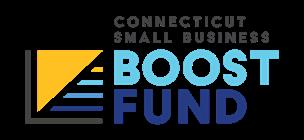


A New Model Emerges
Working together and prioritizing learning, these partners ultimately designed a model with the Recovery Funds that builds an ecosystem of support around a network of community-based lenders, relying on three core elements: capital, technology, and technical assistance.


Capital
The capital solution was structured to take loans off the books of community lenders, allowing them to do more lending than their balance sheets allowed and get more leverage out of existing capacity. The partners created five special purpose vehicles that purchased 95% of every loan from a simple, standardized loan product from the nearly forty small business lenders that participated. This meant that with every dollar available, they could make $20 worth of loans to small businesses. This shifted the revenue structure from one based on spread to one based on loan volume. A per loan floor for fees was implemented to make sure that small dollar loans were still viable.
Technology
Technology investment can help CDFIs serve business clients more effectively,19 and—in this case—technology was critical to the success of the Recovery Funds. Connect2Capital, an on-line marketplace operated by CRF, provided a common platform for funding application intake and matching small business owners to lenders and technical assistance providers. This made it possible for the funds to market one website, connect businesses with a user-friendly network of lenders and resources, and reduced customer acquisition costs for the participating CDFIs. The standard technology tool has also allowed for document storage, loan tracking, and real-time information for program management and reporting.
SMALL BUSINESS COMMUNITY FINANCE: SCALING WITH INTEGRITY | 15
MARKET INNOVATION: THE RECOVERY FUNDS of loans were to businesses with less than 10 employees of loans were to women and entrepreneurs of color 70% 86%
CAPITAL TECHNICAL ASSISTANCE C2C TECHNOLOGY PLATFORM Recovery Funds: An Ecosystem of Support 14 | SMALL BUSINESS COMMUNITY FINANCE: SCALING WITH INTEGRITY
Business Support Services



(or “Technical Assistance”)
Business support services, known as technical assistance (TA) in the community finance field, was the third critical component of this support ecosystem. These business support services were tailored for each state, leveraging or augmenting the existing TA infrastructure. These business support services have been a critical component of these efforts; specifically, for the loans tracked in the Recovery Funds, 52% of loan recipients received TA in support of their funded loan applications, helping them qualify for the capital their business needed. A recent Federal Reserve Bank case study of the California Rebuilding Fund, one of the Recovery Funds, concluded that “technical assistance is an important component of enabling small business participation in these types of programs.”20
Creating Partnerships
At the same time as the model was being developed, a sense of urgency had continued to grow in funders, state economic development agencies, and private investors. Funders of all types were, likewise, mobilizing on a massive scale to support the small business ecosystem. For example, the Ford Foundation
leveraged its balance sheet to issue a $1 billion social bond to help support and strengthen nonprofit organizations hit hard by the COVID-19 pandemic, and Wells Fargo donated all gross processing fees from PPP loans made in 2020 to a fund dedicated to serving small businesses. Funders, such as the Citi Foundation, were also thinking creatively and trying to provide flexibility to their partners by rapidly transitioning their programmatic grants to general operating support.
Despite the perceived risk of the small business loans, money poured in from all corners of the country to support the Recovery Funds. Investors were drawn to support this model because it relied on CDFIs as trusted partners and on public-private partnerships. Many investors even took different roles in the capital stack in accordance with their revised risk appetite given the circumstances. For example, Wells Fargo committed $42.7 million in loans and grants to Recovery Funds, the Citi Foundation made a $10 million grant, and the Ford Foundation went on to make a $10 million program-related investment. No matter what role these funders traditionally played, almost all funding partners had to push beyond their normal comfort levels to make the Recovery Funds work. For the Citi Foundation, this significant investment was born out of their “commitment to meeting the moment.”21 The capital
Free from Balance Sheet Constraints
The special purpose vehicles (SPV) bought 95% of loan products from each CDFI, freeing up cash to lend to more consumers. This provided 20 times leverage for every dollar available.
Recovery Funds Got Capital to Where it
ORIGINAL LOAN
Banks, corporations, philanthropic partners, and the public sector invested loans and grants in the Recovery Funds.
RECOVERY FUNDS
Five separate Recovery Funds built an ecosystem of support and administered funds through local partners.
LOCAL PARTNERS
Local partners, such as CDFIs and TA providers originated loans and provided support to small businesses.

SMALL BUSINESSES
The money went to those that need it most: local small businesses and nonprofits that lack access to capital.

16 | SMALL BUSINESS COMMUNITY FINANCE: SCALING WITH INTEGRITY SMALL BUSINESS COMMUNITY FINANCE: SCALING WITH INTEGRITY | 17
MARKET INNOVATION: THE RECOVERY FUNDS
CDFIS STATE SPECIAL PURPOSE VEHICLE SMALL BUSINESS OWNERS $ $ $ $ $ $ $ $ $
How the
was Needed Most
provided by the Ford Foundation would ultimately be lent in a subordinate position, at zero interest, and be used to absorb operating losses, which was much riskier than their normal risk profile, in response to the need.
Funding not only flowed from longstanding CDFI partners like the Ford Foundation, Citi Foundation and Wells Fargo, but also from new partners making their first investments in the community development sector. Historically, many investors had been precluded from CDFI lending due to their large required minimum investment size, beyond what a normal CDFI can absorb. By pooling capital needs, the model provided a unique opportunity for new partners to make their first investments in the community finance sector. Overall, the Recovery Funds have raised more than $500 million from 71 different entities, of which 74% is private capital. By using public funding as a risk mitigant in the form of first-loss capital, these funds were able to attract the private funding necessary to enable these state-wide efforts to support small businesses. This public funding came from cities, counties, and state
economic development agencies, creating the credit enhancement that made building state small business secondary markets possible.
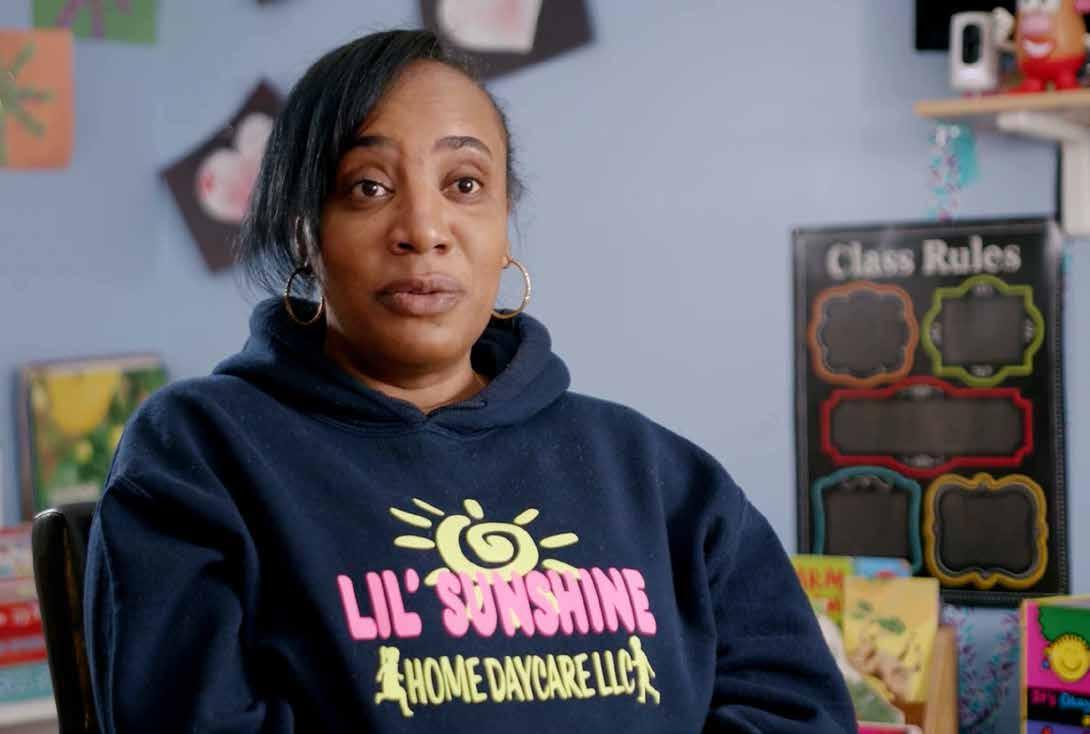
What I think is so important about the Recovery Funds model is that it is an avenue of being able to collect, wrap, and sell the loans. It is an opportunity to unlock a new flow of capital that isn’t related to government grants or one-off small bank investments. Is this a way to unlock true consistent liquid capital going back and forth between Main Street and Wall Street? That would be so exciting.”
Part of what was attractive is the collaboration and partnership between multiple CDFIs that know their markets well. We also appreciate the public-private partnerships and the ability to partner with other funders to leverage state and local government capital.

18 | SMALL BUSINESS COMMUNITY FINANCE: SCALING WITH INTEGRITY
MARKET INNOVATION: THE RECOVERY FUNDS
Technical assistance helps businesses qualify for the capital they need.
Small Business Boost Fund, streamlining the process and making sure she had her financial documents in order. With the money she has received through the fund, Kamara plans to expand her business to a second location.
Kamara
Moodie has been the owner of Lil’ Sunshine Home Daycare in Bridgeport, Connecticut for 16 years. Her advisors with the Connecticut Small Business Development
Center made sure she was loan-ready before applying for the Connecticut
Kristen
Program
Citi Foundation
Scheyder, Senior
Officer,
Megan
Community
Investment, Wells Fargo $500 Million 27 9 2 5 1 2 9 8
7 20x 52% 26% 74% Special Purpose Vehicles meant that with every dollar available, they could make $20 worth of loans to small businesses City, County, and State Economic Development Funds Bank, Foundation, Corporate Capital of loan recipients received technical assistance, helping them qualify for the capital their business needed. Total amount raised by the Recovery Funds Banks Family Foundations Community Foundations Family Offices Corporation Insurance Companies Corporate Foundations Private Foundations Faith-based Institution Public Agencies Types of Recovery Fund Investors PUBLIC SECTOR PRIVATE SECTOR Funding for the Recovery Funds SMALL BUSINESS COMMUNITY FINANCE: SCALING WITH INTEGRITY | 19 *Investors are counted twice if they invested in two funds
Teare, Managing Director of
Lending and
1
Our Impact
Scaling CDFI Efforts
Together, these funding partnerships, the unique ecosystem approach of the model itself, and the dedication of the participating lenders allowed CDFI lending to scale during a period of extreme economic uncertainty. At a time when nearly every other lender either hiked up prices or stepped out of the market altogether, the Recovery Funds have already financed more than 5,500 small businesses, nearly 70% of them led by women or people of color.
Scaling, in the broadest sense, means successfully achieving the desired outcome when you manage to take an idea from a smaller group to a much larger one. 22 Participating in the Recovery Funds allowed community lenders to exponentially increase their originations without needing to increase the size of their balance sheets at the same rate. Fifteen Recovery Fund lenders recently responded to a survey, providing their historic lending data. Excluding all PPP lending, these lenders originated a combined total of 4,797 loans in FY2020. By FY2022, they had originated a total of 6,705 loans, a nearly 40% increase. In dollar terms, the growth was even more impressive: Recovery Fund lenders who originated a total of $175,510,470 in loans in FY20 lent a total of $381,081,888 in FY22. From FY20 to FY22, these CDFIs have over doubled the total amount they have originated and had a compound annual growth rate of 47%.
The lessons learned around market formation from the Recovery Funds have applicability across the small business finance sector, and—in fact—the broader financial services market. In this case, small business lending was successfully scaled through CDFIs by determining what could effectively be centralized and standardized and what needed to remain unique to the CDFI and have localized control.
By centralizing all functions that could be centralized, the Recovery Funds created operating efficiencies and cost
The enduring impact of this will be moving from a scarcity mindset of “we’re all competing” to one of abundance. We’re all going to be a lot better prepared when the next crisis hits. Both the strength of our institutions and our relationships.”
Patrick Davis, SVP of Strategy, Community Reinvestment Fund
savings, allowing CDFIs to focus on what they did best— providing small business support and capital. And using standardized technology tools and lending products created consistency for loan performance evaluation, which helped attract greater outside investment.
For participating CDFI lenders, the Recovery Funds revolutionized how they thought about competition, standardization, and their balance sheets. Organizations that once viewed other CDFIs as competitors now viewed their fellow Recovery Fund participants as allies in service of a larger cause. Previously viewed as too expensive, Recovery Fund lenders began to see investment in technological infrastructure and staff capacity as critical for the future. Once focused on the size of their balance sheets, CDFI lenders instead learned to focus on the reach and breadth of their impact as lenders. As Paul Quintero, CEO of Ascendus, said, “It forced transformational thinking, and that is unique. We're not usually faced with such collective challenges, but the collective response happened.”
67% of small business owners reported increased ability to maintain jobs
Application and matching process
Referrals, marketing and customer acquisition
Reporting
Basic eligibility criteria
Basic product features
Fundraising and capital raising
Legal documentation
Impact evaluation
Individual CDFI underwriting processes and standards
Local level expertise on small business needs
Client-level relationships and ongoing loan servicing
CDFIs chosen service areas and populations
Pre- and post-loan technical assistance
$63.7 million
Total Recovery Funds Non-Recovery
$40.3 million
$910,000
$20.1 million
20 | SMALL BUSINESS COMMUNITY FINANCE: SCALING WITH INTEGRITY SMALL BUSINESS COMMUNITY FINANCE: SCALING WITH INTEGRITY | 21
MARKET INNOVATION: THE RECOVERY FUNDS
STANDARDIZED
CENTRALIZED AND
LOCALIZED CONTROL
2020 2021 2022
2019
CDFI Case Study: NDC Community Impact Loan Fund Scales Lending through Recovery Funds
Market Innovation Serving Small Businesses

1. Centralize
By centralizing market support functions, CDFIs were able to focus on what they do best... lending.
2. Standardize
Through the use of standardized technology and the purchase of one standard loan product, we were able to create consistency for 1) loan performance evaluation
2) attracting investment, and 3) customer experience.
3. Pilot Various states, CDFIs, and partners helped pilot the program, generating meaningful performance data and creating operating efficiencies as the program grew.
4. Scale
We have grown with a mindset of continuous improvement, learning from impact and financial performance data to further refine program delivery.
For the small businesses served by the Recovery Funds, these loans were a lifeline. An impact evaluation conducted by 60_decibels confirmed these loan programs helped decrease stress, increased the quality of life for the business owner and their employees, and helped them keep their doors open. In short, 69% of respondents could not have easily found a good alternative source of credit. Further, 67% of respondents reported an increase in their ability to maintain jobs with their loan; similar research on the impact of PPP loans suggests only one in four affected people thought their jobs would have been in jeopardy without the loans.
Recovery Fund loans went to those who needed them most— the small businesses that are systematically excluded from the credit markets due to size, location, or owner demographics. Of all the small business loan recipients, 73% had revenues of less than $500,000, and—of all those we surveyed—the overall recipients had an average of six employees at the time of application. Approximately 74% were to individuals who qualified as Socially and/or Economically Disadvantaged, and 53% of survey respondents had never before borrowed money for their businesses.
Small business owners had an almost uniformly positive experience. The Recovery Funds had an average Net Promoter Score® of 69. A Net Promoter Score® is a gauge of customer satisfaction. Anything above 50 is considered excellent, meaning that customer satisfaction with these state-wide funds cannot be overstated. They specifically loved the ease of process, favorable interest rates, and helpful staff.
Despite the success of these programs, small businesses have many remaining capital needs, reminding us that small businesses were undercapitalized long before the pandemic. Unsurprisingly, these entrepreneurs report lack of capital as the biggest obstacle holding their business back from reaching its full potential. With 18% of entrepreneurs having no cash reserves whatsoever, 59% of businesses report that they will need additional capital over the next 12 months. These funds are needed for working capital, to hire more staff, and to expand. Almost half of these respondents own neither their home nor their businesses property, and more than half are interested in purchasing property for their business.
Loan performance
CDFIs are known for managing quality portfolios and working closely with borrowers to limit losses. Standardizing and scaling lending has – to date – not caused any increases in expected losses.
Recovery Fund lenders were originating small business loans in the height of the pandemic and lending to business owners who lacked access to other social safety nets for their business. Despite the extreme disruption facing these small businesses, the Recovery Funds have performed in line with pre-pandemic CDFI small business lending, which typically sees cumulative loss rates of between 5-10% depending on the loan product and vintage year. With nearly three years of experience to date, cumulative losses across Recovery Funds are around 4%.*
69%
53% would not have found a good alternative to their loan of respondents had never borrowed money before for their business
66% employees' quality of life has improved as a result of receiving a loan
For many businesses in hard hit industries, the Recovery Funds were their only viable option
SMALL BUSINESS COMMUNITY FINANCE: SCALING WITH INTEGRITY | 23
MARKET INNOVATION: THE RECOVERY FUNDS
Kyle Savage, executive director and founder of Shining Studios Theater, used his NY Forward loan to take his afterschool theater program outdoors during the summer and fall of 2020, and online over the winter.
If I didn't have access to the loan, my employees would have gone through hardships. I expect to be able to pay their salaries with cashflow, however that has been inconsistent.”
Small Business owner (New York Forward)
*As of April 2023
The CDFI sector has a history of strong performance that it brings to these fund structures”
Megan
Teare,
Managing Director
of Community Lending and Investment, Wells Fargo
What is Next?
Expanding our Existing Efforts
With underserved entrepreneurs across the country, there continues to be a strong need for aggregation to bridge to the capital markets. The underlying assets of the Recovery Funds (the CDFI-originated small business loans) are often perceived as risky. They are loans to the smallest, community-based businesses, which often exist outside of the financial system and struggle to access credit. However, over time, the Recovery Funds have provided a standardized track record for the underlying loans, building on the decades of lending history from our CDFI partners, demonstrating both impact and financial performance.
Moving forward, the track record built through these programs has allowed the partners to refine and adapt the model for the US Treasury’s State Small Business Credit Initiative (SSBCI) program. We are providing a long-term capital solution for small businesses through partnership with several states, including New York, Nevada, Washington, and New Jersey, among others. Using SSBCI funds, this model will facilitate access to private, institutional capital at scale and pricing that would not otherwise be available without the public funds acting as equity in the structure. However, instead of doing individual fundraising from dozens of smaller investors as was done with the Recovery Funds, Calvert Impact is now raising the private capital more efficiently and cost effectively through a national warehouse line. Once enough assets have been originated and purchased by the state-based facilities, Calvert Impact will securitize the assets and issue
asset-backed notes to institutional investors to repay the warehouse and recycle funds.

Leveraging our Learning: Scaling with Integrity
There are several critical elements required to support secondary markets for CDFI-originated assets: transaction level data, standardized asset aggregation, affordable credit enhancement, and mission lock.
Transaction Level Data
The first request of any ratings agency, investment bank, or investor when evaluating a pool of assets is “show me the tape,” i.e., transaction-level data for each asset in the pool. They need to see detailed payment data at the loan level for the assets that are being pooled or securitized, as well as performance data for similar assets originated in the past. More specifically, they need to analyze the historic performance of like
assets over a period of time, and ideally through credit cycles, and they need this data to be standardized and detailed – showing every payment (or non-payment) made on every loan throughout its life. This transactionlevel detail does not exist in any aggregated form across the industry today – and even across different lenders, data collection practices vary significantly. Without standardized and robust transaction-level data, secondary markets will not develop.
Asset Standardization and Aggregation
Relatedly, pooling assets requires a level of asset standardization. Calvert Impact and our partners have found that there are usually more standard features common to CDFI-originated loan products than other credit assets, and that it is possible to strike a balance between standardization of underwriting criteria and the lender discretion. To prove this to the market, however, a much larger database of transaction-level data needs to be made available so that analysts and investors are able to understand and quantify the risk of a “mostly standard” loan.
We believe strongly that there is a role for both standard and non-standard financial products within the community finance sector, where CDFIs and other lenders can use the liquidity on their balance sheets to originate and hold non-standard loans and originate and sell any assets that can be standardized. This concept won't be new to anyone involved in mortgage banking, where loans that conform to Fannie Mae or Freddie Mac guidelines are readily sold in the secondary market, while originators may hold non-conforming mortgages on their balance sheet. This enables each lender to serve more customers without losing the “special sauce” of their locally-tailored approach.
In addition, these standardized assets need to be aggregated across originators until individual lenders are originating enough volume to reach the minimum size requirements of the asset-backed markets (around $200 – 250 million in loans per issuance, at a minimum).
For small loan sizes – a specialty of the community finance sector – this can be 5,000 to 8,000 loans, which
is rare for any one community lender to originate on their own within one six- to twelve-month period.
Credit Enhancement
To support the early days of a new secondary market, there needs to be a scaled source of affordable risk capital or credit enhancement. Due to the lack of perfect transaction- and market-level data, markets will initially require more credit enhancement to bridge the gap between real and perceived risk of the small business loans. In the traditional credit markets, the issuer and/or outside equity investors would provide this enhancement, but the cost of that equity is high and results in pricing to the end customers (small businesses) that is too high for mission-based lenders. Access to affordable credit enhancement by the sponsor, issuer, and/or issuance would attract affordable private capital and keep the blended cost of funds to a level that works for communities.
Mission Lock
Finally, developing secondary markets for community finance requires a relentless focus on mission that is woven throughout the structure and transaction documentation. There needs to be an appreciation for how CDFIs originate and manage loans - and an assurance that the CDFI will maintain the relationship in accordance with their servicing practices. Securitization has a negative connotation because of prior bad actors and bad practices, but when implemented with mission locked in, can be a powerful tool to support scale with integrity.
24 | SMALL BUSINESS COMMUNITY FINANCE: SCALING WITH INTEGRITY SMALL BUSINESS COMMUNITY FINANCE: SCALING WITH INTEGRITY | 25
MARKET POTENTIAL: THE FUTURE
NDC provides technical assistance, professional training, small-business lending, debt and equity financing for residential, commercial, public, and nonprofit facilities.
CDFIs need to grow. They need to evolve. It’s a competitive landscape, especially for CDFI small business lenders who are competing with online lenders that have a strong digital presence.”
Kristen Scheyder, Senior Program Officer, Citi Foundation
The Market of the Future
The Call: How to Support the
Maturing
Market
Imagine we enter the next financial crisis, natural disaster, or economic downturn and instead of the government and philanthropy throwing spaghetti against the wall in the form of hastily pulled together programs, we have a solid, stable financial market for small businesses. Imagine this financial system is more inclusive and represents a more significant portion of small business owners, allowing us to support those most affected through targeted subsidy.
Imagine we have market analysts whose job is to track asset performance across the community finance sector to facilitate direct and asset-backed transactions from a broad swath of individual and institutional investors so CDFIs have access to more diversified and lower cost liquidity. Imagine we have democratized issuances of securities backed by loans to small businesses in your state or region so everyone can put their investments into the real economy that they live in and support with their purchases every day.
These should not be fantasies. We have all the ingredients of a well-functioning marketplace, we just need a collective focus on the markets we want to see and the roles needed to make those markets work.
Invest in market infrastructure
We have five specific recommendations to support a more resilient and effective market:
1. Address the gap between real and perceived risk with smart subsidy
2. Invest in market infrastructure
3. Support data collection and analysis
4. Prioritize home-grown technology
5. Leave no community behind
As Paul Quintero from Ascendus says, in all other sectors of our economy, we invest in opportunity and potential. In community finance, we invest just enough to get by. It's time for that to change.
Address the gap between real and perceived risk with smart subsidy
Philanthropic and federal funding sources should prioritize offering credit enhancements for secondary market development, including loan guarantees and subordinated capital to leverage additional public dollars. Because small business loans lack sufficient historical transaction-level data, we have to offer the market four to five times the level of credit enhancement than we think is required for the true risk of the assets. With this affordable credit enhancement, we can begin to build the data and track record of the assets so the level of credit enhancement required is reduced over time as the market has access to more data. Access to a geographically unrestricted source of credit enhancement would allow us and others to work with CDFIs and assets across the country to further scale this work.
The community finance sector is creatively organizing in many ways to solve for the challenge of scale. For example, new state-wide and regional lender coalitions like Appalachian Community Capital and others are being created to more effectively centralize operations, such as fundraising, or to provide important back-office infrastructure, like IT or insurance. While not all CDFI operations can be centralized, these efforts ultimately create operating efficiencies while allowing community lenders to stay deeply localized in their communities. Removing these costs from the individual CDFIs helps increase their self-sufficiency and reduces their reliance on subsidy over time.
Partners of the community finance field will, over time, need to align their investment and grant processes to support this innovation (e.g. investing in a new regional fund without a traditional track record but managed by experienced lenders, or allowing a collaborative to apply together for a grant). Furthermore, supporting these efforts in their early years when they need higher levels of subsidy will ultimately strengthen this critical infrastructure as the field matures. Lenders can then focus on what they do best, providing culturally-tailored and community-focused services.
Support data collection and analysis
Markets function best with access to transparent, up-to-date information on the activities and actors within them. This information can then be accessed, analyzed, and used by investors and others in the market to make more informed decisions.
Kristen Scheyder, Senior Program Officer, Citi Foundation
There is very little aggregated, up-to-date market-level data on the state of the community finance sector. The CDFI Fund produces an “Annual Certification and Data Collection Report” 23 each year by compiling reporting from each CDFI, which is a helpful snapshot, but it is not timely enough to have an impact on decision making and does not exist within a tool that can be easily disaggregated, analyzed, and manipulated. It also focused on activities only, instead of an analysis of risk or performance. Assessing performance likely requires the entrance of ratings agencies or third-party analysts that can aggregate market-level data to provide commentary on marketlevel performance and results.
Address the gap between real and perceived risk with smart subsidy
Prioritize homegrown technology
a resilient and effective market 1 2 3 4 5
Leave no community behind
26 | SMALL BUSINESS COMMUNITY FINANCE: SCALING WITH INTEGRITY SMALL BUSINESS COMMUNITY FINANCE: SCALING WITH INTEGRITY | 27
MARKET POTENTIAL: THE FUTURE
Invest in market infrastructure
Support data collection and analysis
Recommendations to support
CDFIs need to reinvest in themselves, reinvest in their technology, reinvest in their innovation and their systems. Otherwise, all the progress that’s been made, could be lost. We need to meet this moment.”
Major Markers of a Maturing Credit Market
O -balance Sheet (AKA “conforming”)
to ongoing obsession in the non-profit field around maintaining low administrative costs. Given the unique role of the public sector for accessing and supporting data standardization, public sector support could be used to “jumpstart” data collection efforts. Additionally, federal and philanthropic resources should support industry-wide data collection and transparency efforts and capacity building for CDFIs’ own impact and evaluation work.
Cost of Capital gets more e cient over time as risk is more accurately priced
On-balance Sheet (AKA “non-conforming”)
Prioritize home-grown technology
Equity must remain a lens by which we approach the development of the CDFI field. We must not only understand and explore these local nuances but also vigilantly ask the question, “who are we excluding?” This question is critical because—as we learned with PPP lending—if you exclude the lenders, you ultimately exclude their clients.
While there has been exciting progress with a few large CDFIs that have received credit ratings from a nationally recognized statistical rating organization (NRSRO), there has not been sufficient data access or volume for the NRSROs to create a business line tracking the industry or its assets (for example, loans to Federally Qualified Health Centers or working capital for small businesses). There is also a general lack of focus and understanding of the CDFI industry and its assets that pose a challenge. Aeris is a non-profit organization dedicated to providing tools and creating resources that support CDFI investment, providing CDFI ratings, analyses, and consolidated industry data. Supporting and growing an industry resource like Aeris – or forging a partnership between community finance industry actors and NRSROs – is critical to ensuring that a
baseline of market data and information is available to analysts, advisors, and investors.
The same is true for impact performance and evaluation. The industry has largely been focused on reporting outputs, i.e., number of housing units built or number of small businesses financed. However, there has not been sufficient research on how those activities translate into the outcomes the industry seeks such as healthier communities, meaningful living-wage jobs, wealth creation, and others. With better impact data, the individual lenders within the industry could more effectively focus their efforts, raise necessary public or philanthropic dollars, and attract individual and institutional investors who are increasingly looking for this level of impact.
Federal and philanthropic money can support these efforts through ensuring there is enough funding allocated to impact evaluation and research to contribute to a body of impact evidence across the industry. Impact and evaluation are often an “unfunded mandate” in the traditional grant making process due
Underpinning all of these market development functions is a necessary investment in industry and lender-level technology. Consolidation within the banking sector has created a bifurcated universe of lenders that includes the technology “haves” and “have nots.” The large financial institutions are able to spend millions, if not billions, of dollars a year investing in their technology infrastructure and have created tools that make it easier for them to find and manage their customers as well as manage cybersecurity and other risks. Similarly, online lenders have raised billions in equity to increase their ability to quickly acquire customers, make near-instantaneous credit decisions, and manage a seamless customer experience. But the return on equity requirements of these lenders often means that the products they offer are expensive (at best) or usurious.
Scaling the community finance industry with investments in technology across the customer lifecycle (marketplace and customer acquisition, application and loan decisioning, loan servicing, customer support, etc.) would enable community lenders to increase their operational efficiency and scale without losing the integrity of their human- and relationship-centric approach.
Leave no community behind
As the field matures, it is important to remember that some CDFI markets will need a higher level of subsidy than others due to the long-standing history of assetstripping in under resourced communities. In addition, structural and systemic barriers, such as the varying statuses of Native American lands held in trust by the federal government, can create obstacles to secondary market efforts regardless of local CDFI capacity.
Meaningful public data collection remains part of the answer to ensure that entire communities are not left behind. However, it is only a small piece of the puzzle. It is also imperative to fund research on systemic barriers to secondary market access and projects that prioritize this equity lens to market development.
All Hands On Deck
It will take all of us to create more equitable capital access for small business owners. It is our hope by telling the story of the Recovery Funds, we can share what is possible when we give our collective focus to creating comprehensive solutions to broken capital markets.
Academic researchers are needed to help us better understand where and why capital markets are the most broken, mapping capital access and need.
Public partners are needed to provide credit enhancement, support standardization, and subsidize technology solutions.
Philanthropy is needed to support and invest in full ecosystem changes.
No matter where you sit within the ecosystem, you are needed and have a role to play. If you are trying to discern your role, we are here at Calvert Impact to be your thought partner.
CDFIs are poised to play an even greater role mobilizing capital for small businesses with the right tools and a more supportive ecosystem.
Let’s build it together.
28 | SMALL BUSINESS COMMUNITY FINANCE: SCALING WITH INTEGRITY SMALL BUSINESS COMMUNITY FINANCE: SCALING WITH INTEGRITY | 29
MARKET POTENTIAL: THE FUTURE
“Now my team is seeing why partnerships like SOAR are so important … liquidity!”
Grace Fricks, President and CEO of Access to Capital for Entrepreneurs
Loan seasoning + performance over time
Loan Volume
Product Innovation Product Standardization Secondary Market Access
Appendix A: List of Recovery Funds CDFI Originators
Endnotes
1 Small Business Credit Survey, 2022 Report on Employer Firms, Federal Reserve Banks of Atlanta, Boston, Chicago, Cleveland, Dallas, Kansas City, Minneapolis, New York, Philadelphia, Richmond, St. Louis, and San Francisco.
2 Why Lending Transparency Matters For Small Businesses (forbes.com)
3 Improved Race, Ethnicity Measures Show U.S. is More Multiracial (census.gov)
4 Meyer, Brent and Schweitzer, Mark. Access to Credit for Small and Minority Owned Businesses. Federal Reserve Bank of Cleveland, Number 2022-4, March 22, 2022.
Appendix B: List of Recovery Funds Funders and Investors
5 U.S. Bureau of Labor Statistics (bls.gov)
6 US Small Business Administration Office of Advocacy
7 Shared Destinies? Small Banks and Small Business Consolidation (kansascityfed.org)
8 The Fed - Availability of Credit to Small BusinessesOctober 2022 (federalreserve.gov)
9 Meyer, Brent and Schweitzer, Mark. Access to Credit for Small and Minority Owned Businesses. Federal Reserve Bank of Cleveland, Number 2022-4, March 22, 2022.
10 Small Business Credit Survey, 2022 Report on Employer Firms, Federal Reserve Banks of Atlanta, Boston, Chicago, Cleveland, Dallas, Kansas City, Minneapolis, New York, Philadelphia, Richmond, St. Louis, and San Francisco.
11 Small Business Credit Survey, 2022 Report on Employer Firms, Federal Reserve Banks of Atlanta, Boston, Chicago, Cleveland, Dallas, Kansas City, Minneapolis, New York, Philadelphia, Richmond, St. Louis, and San Francisco.
12 CDFI Fund, CDFI Certification | Community Development Financial Institutions Fund (cdfifund.gov)
13 2020 ACR Report (cdfifund.gov)
14 2020 ACR Report (cdfifund.gov)
15 The Fed - Availability of Credit to Small BusinessesOctober 2022 (federalreserve.gov)
16 CDFI Loan Fund Capital Needs Survey Report (mycnote.com)
17 Double Jeopardy: COVID19 and Black Owned Businesses (newyorkfed.org)
18 CDFIs Continue to Outperform Other PPP Lenders (ofn.org)
19 Leveraging Technology to Scale Up Small-Business Lending (urban.org)
20 Case Study of the California Rebuilding Fund (CARF) | San Francisco Fed (frbsf.org)
21 Interview with Kristen Scheyder, Citi Foundation, February 17, 2023
22 List, John. The Voltage Effect: How to Make Good Ideas Great and Great Ideas Scale, 2022.
23 2020 ACR Report (cdfifund.gov)
30 | SMALL BUSINESS COMMUNITY FINANCE: SCALING WITH INTEGRITY SMALL BUSINESS COMMUNITY FINANCE: SCALING WITH INTEGRITY | 31
3Core
Accessity
Accion Opportunity Fund
Access to Capital for Entrepreneurs (ACE)
Access Plus Capital 6. Ascendus
AmPAC Business Capital 8. Black Business Investment Fund (BBIF) 9. Business Impact NW 10. California FarmLink 11. Capital for Change 12. CDC Small Business Finance 13. Communities Unlimited 14. Community Economic Development Foundation (CEDF) 15. Community Preservation Corporation (CPC) 16. Craft3 17. Evergreen 18. HEDCO 19. LiftFund 20. Main Street Launch
MoFi
National Asian American Coalition (NAAC)
NDC Community Impact Loan Fund
O'Bee Credit Union
Pacific Asian Consortium in Employment (PACE)
Pacific Community Ventures 27. Partner Community Capital (formerly NCIFund)
Pathway Lending 29. People Fund 30. Pursuit 31. seCTer 32. Southern Bancorp Community Partners 33. TruFund Financial Services 34. Verity Credit Union 35. Women's Economic Ventures 36. Working Solutions New York Forward Loan Fund
Apple Bank 2. Blackrock Charitable 3. BNB Bank (Dime) 4. Citi Foundation 5. Citizens Bank 6. Deutsche Bank 7. Evans Bank 8. Ford Foundation 9. HSBC Bank 10. M&T Bank 11. MetLife 12. Mizuho Bank 13. National Community Reinvestment Coalition 14. New York State's Empire State Development 15. New York State's Homes and Community Renewal 16. The Ralph C. Wilson, Jr. Foundation 17. Wells Fargo California Rebuilding Fund 18. Clients of Align Impact, an impact-focused Registered Investment Advisor 19. Bank of America
California's
Economic Development Bank (IBank) 21. California Wellness Foundation 22. The Doctors Company 23. First Republic Bank 24. Grove Foundation 25. Irvine Foundation 26. JP Morgan 27. Kapor Center 28. Packard Foundation 29. Sand Hill Foundation 30. San Francisco 31. Santa Clara County 32. Visa Foundation 33. Wells Fargo Southern Opportunity and Resilience (SOAR) Fund 34. Clients of Align Impact, an impact-focused Registered Investment Advisor 35. Capital One 36. Ceniarth 37. Community Foundation of Atlanta 38. Compton Foundation
Excelsior Impact Fund 40. Generation Foundation 41. Greater Houston Community Foundation 42. Grove Foundation 43. Heifer Foundation 44. Heron Foundation 45. Jewish Community Federation & Endowment Fund 46. JP Morgan 47. Kellogg Foundation 48. Mercy Investment Services 49. Microsoft Corporation 50. Mighty Arrow Family Foundation 51. Ms Foundation for Women 52. Client of North Berkeley Wealth Management 53. Packard Foundation 54. Phillips Foundation 55. Visa Foundation 56. Wells Fargo 57. Winrock Foundation 58. Woodforest National Bank Washington Small Business Flex Fund 59. Department of Commerce 60. Heritage Bank 61. JP Morgan 62. Key Bank 63. Umpqua Bank 64. WaFed Bank 65. Wells Fargo Connecticut Small Business Boost Fund 66. Citizens Bank 67. Connecticut's Department of Economic and Community Development 68. First Republic Bank 69. Key Bank 70. M&T Bank 71. Webster Bank
Appendix 1.
2.
3.
4.
5.
7.
21.
22.
23.
24.
25.
26.
28.
1.
20.
Infrastructure and
39.
About Calvert Impact
Calvert Impact makes impact investable. As a global nonprofit investment firm, we help investors and financial professionals invest in solutions that people and the planet need. During our more than 25-year history, we have mobilized over $4 billion to build and grow local community and green finance organizations through our flagship Community Investment Note® and structuring services. Calvert Impact uses our unique position to bring the capital markets and communities closer together. For comments or questions, contact us at impact@calvertimpact.org . Learn

more at calvertimpact.org
One of the things to come out of it all was that there was a full collaboration from government, from private and from the philanthropic sectors. I’ve never seen it all come together the way as it did during the pandemic. My hope is that those efforts continue.
It's just not government's job. It's just not the private sector's job. It's not philanthropy’s job.
It's everyone's job.”
James Bason, President & CEO, TruFund Financial Services, Inc.
7550 Wisconsin Avenue
8th Floor Bethesda, MD 20814
800.248.0337
calvertimpact.org
@calvertimpcap
linkedin.com/company/calvert- impact
CALVERT IMPACT CAPITAL, A 501(C)(3) NONPROFIT AND A SUBSIDIARY OF CALVERT IMPACT, INC., OFFERS THE COMMUNITY INVESTMENT NOTE®, WHICH IS SUBJECT TO CERTAIN RISKS, IS NOT A MUTUAL FUND, IS NOT FDIC OR SIPC INSURED, AND SHOULD NOT BE CONFUSED WITH ANY CALVERT RESEARCH AND MANAGEMENT-SPONSORED INVESTMENT PRODUCT.
ANY DECISION TO INVEST IN THESE SECURITIES SHOULD ONLY BE MADE AFTER READING THE PROSPECTUS OR BY CALLING 800.248.0337. DUE TO BLUE SKY REGULATIONS, THE CURRENT OFFERING OF THE COMMUNITY INVESTMENT NOTE MAY NOT BE AVAILABLE IN ALL STATES. PAST PERFORMANCE IS NO GUARANTEE OF FUTURE RESULTS. THIS IS NOT AN OFFER TO SELL YOU OUR SECURITIES AND WE ARE NOT SOLICITING YOU TO BUY OUR SECURITIES. THE OFFERING IS MADE SOLELY BY THE PROSPECTUS. WE WILL OFFER AND SELL OUR SECURITIES ONLY IN STATES WHERE AUTHORIZED.



























